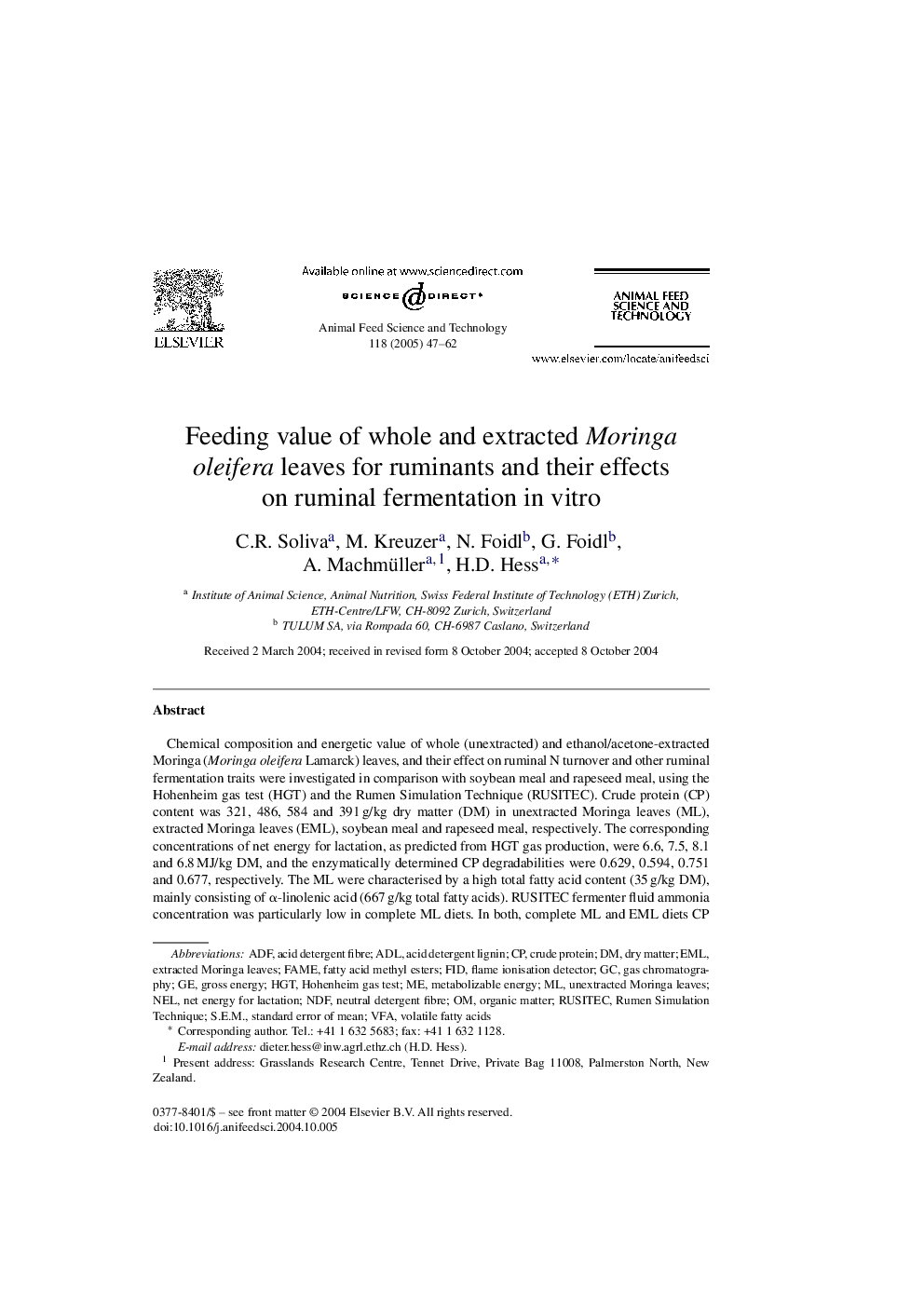| کد مقاله | کد نشریه | سال انتشار | مقاله انگلیسی | نسخه تمام متن |
|---|---|---|---|---|
| 8973855 | 1552517 | 2005 | 16 صفحه PDF | دانلود رایگان |
عنوان انگلیسی مقاله ISI
Feeding value of whole and extracted Moringa oleifera leaves for ruminants and their effects on ruminal fermentation in vitro
دانلود مقاله + سفارش ترجمه
دانلود مقاله ISI انگلیسی
رایگان برای ایرانیان
کلمات کلیدی
ADFADLrumen simulation techniqueHohenheim gas testRUSITECNDFHGTVFAEMLS.E.M.Moringa oleiferaflame ionisation detector - آشکارساز یونیزاسیون شعلهVolatile fatty acids - اسیدهای چرب فرارacid detergent fibre - الیاف پاک کننده اسیدEnergy - انرژیnet energy for lactation - انرژی خالص برای شیردهیMetabolizable energy - انرژی متابولیزه شدهgross energy - انرژی ناخالصProtein degradation - تخریب پروتئینRuminal fermentation - تخمیر شفافstandard error of mean - خطای استاندارد میانگینFID - درNEL - درFAME - فامneutral detergent fibre - فیبر مواد شوینده خنثیacid detergent lignin - لیگنین پاک کننده اسیدorganic matter - ماده آلیdry matter - ماده خشکfatty acid methyl esters - متیل استرهای اسید چربTropics - منطقه گرمسیری استواییcrude protein - پروتئین خامGas chromatography - کروماتوگرافی گازی
موضوعات مرتبط
علوم زیستی و بیوفناوری
علوم کشاورزی و بیولوژیک
علوم دامی و جانورشناسی
پیش نمایش صفحه اول مقاله

چکیده انگلیسی
Chemical composition and energetic value of whole (unextracted) and ethanol/acetone-extracted Moringa (Moringa oleifera Lamarck) leaves, and their effect on ruminal N turnover and other ruminal fermentation traits were investigated in comparison with soybean meal and rapeseed meal, using the Hohenheim gas test (HGT) and the Rumen Simulation Technique (RUSITEC). Crude protein (CP) content was 321, 486, 584 and 391 g/kg dry matter (DM) in unextracted Moringa leaves (ML), extracted Moringa leaves (EML), soybean meal and rapeseed meal, respectively. The corresponding concentrations of net energy for lactation, as predicted from HGT gas production, were 6.6, 7.5, 8.1 and 6.8 MJ/kg DM, and the enzymatically determined CP degradabilities were 0.629, 0.594, 0.751 and 0.677, respectively. The ML were characterised by a high total fatty acid content (35 g/kg DM), mainly consisting of α-linolenic acid (667 g/kg total fatty acids). RUSITEC fermenter fluid ammonia concentration was particularly low in complete ML diets. In both, complete ML and EML diets CP degraded and not recovered in ammonia was at least as high as with the soybean meal or rapeseed meal diets suggesting a substantial synthesis of microbial protein. Apparent in vitro degradabilities of organic matter (OM) and fibre of the complete ML and EML diets were similar or even higher as compared with those containing soybean meal or rapeseed meal. Daily methane emission was 17% lower (P < 0.05) with the complete EML diet as compared with the diets containing soybean meal or rapeseed meal. Overall, the results indicate that in ruminants ML and EML have a high potential as alternatives to soybean meal and rapeseed meal as protein sources. Although ML and EML are not suggested as a source of rumen-protected protein, these feedstuffs might enhance the metabolic protein supply of ruminants by supporting the synthesis of microbial protein in the rumen due to their substantial contents of readily fermentable N and energy.
ناشر
Database: Elsevier - ScienceDirect (ساینس دایرکت)
Journal: Animal Feed Science and Technology - Volume 118, Issues 1â2, 3 January 2005, Pages 47-62
Journal: Animal Feed Science and Technology - Volume 118, Issues 1â2, 3 January 2005, Pages 47-62
نویسندگان
C.R. Soliva, M. Kreuzer, N. Foidl, G. Foidl, A. Machmüller, H.D. Hess,